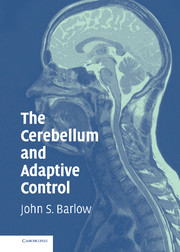Book contents
- Frontmatter
- Contents
- Preface
- Acknowledgments
- PART ONE ANATOMY AND PHYSIOLOGY OF THE CEREBELLAR SYSTEM
- 1 Introduction
- 2 Comparative Anatomy of the Cerebellum
- 3 Anatomy and Physiology of the Cerebellar Cortex
- 4 The Mossy Fiber Afferent System
- 5 The Inferior Olivary System and the Climbing Fibers
- 6 The Cerebellar Nuclei and Their Efferent Pathways: Voluntary Motor Learning
- PART TWO CEREBELLAR FUNCTIONS
- PART THREE MODELS AND THEORIES
- PART FOUR SUMMARY AND CONCLUSIONS
- APPENDIX A A Hybrid Analogue/Digital Multiplexer/Multiplier-Based Adaptive Signal Processor
- Author's Note
- Bibliography
- Index
3 - Anatomy and Physiology of the Cerebellar Cortex
Published online by Cambridge University Press: 28 October 2009
- Frontmatter
- Contents
- Preface
- Acknowledgments
- PART ONE ANATOMY AND PHYSIOLOGY OF THE CEREBELLAR SYSTEM
- 1 Introduction
- 2 Comparative Anatomy of the Cerebellum
- 3 Anatomy and Physiology of the Cerebellar Cortex
- 4 The Mossy Fiber Afferent System
- 5 The Inferior Olivary System and the Climbing Fibers
- 6 The Cerebellar Nuclei and Their Efferent Pathways: Voluntary Motor Learning
- PART TWO CEREBELLAR FUNCTIONS
- PART THREE MODELS AND THEORIES
- PART FOUR SUMMARY AND CONCLUSIONS
- APPENDIX A A Hybrid Analogue/Digital Multiplexer/Multiplier-Based Adaptive Signal Processor
- Author's Note
- Bibliography
- Index
Summary
There has been a successful analysis of the neuronal interactions in the cerebellar cortex (Eccles 1973), but this does not help to any appreciable extent in the attempt to develop an understanding of the mode of operation of the cerebellum in the control of movement. At the best it can form the basis for building models.
(Eccles 1977b)In view of the limited scope of this book and the correspondingly limited treatments of cerebellar anatomy and physiology, the following books and papers may be cited as supplementary sources: Brodal (1981); Brodal (1998); Eccles (1973, 1977b); Gilman, Bloedel, and Lechtenberg (1981); Ito (1984); Kandel, Schwartz, and Jessell (1991); Lechtenberg (1981); and Rothwell (1994).
The anatomical aspects of this chapter are based primarily on Brodal (1981); Eccles, Ito, and Szentágothai (1967); Ghez (1991); Ito (1984); Paley and Chan-Palay (1974); Palkovits, Magyar, and Szentágothai (1972); Parent (1996); and Ramón y Cajal (1995), supplemented in many instances from more recent publications. A synopsis of cerebellar anatomy appears in Voogd and Glickstein (1998). Further aspects of cerebellar system anatomy that are particularly relevant to the topic of adaptive control are considered in subsequent chapters: the mossy fibers (Chapter 4), the climbing fibers and their source, the inferior olive (Chapter 5), and the cerebellar nuclei and their efferent pathways (Chapter 6).
- Type
- Chapter
- Information
- The Cerebellum and Adaptive Control , pp. 14 - 36Publisher: Cambridge University PressPrint publication year: 2002



